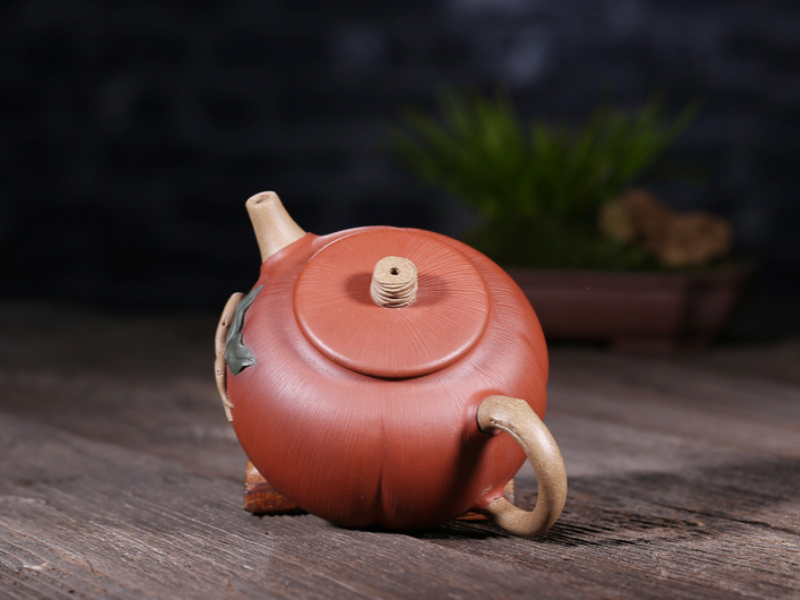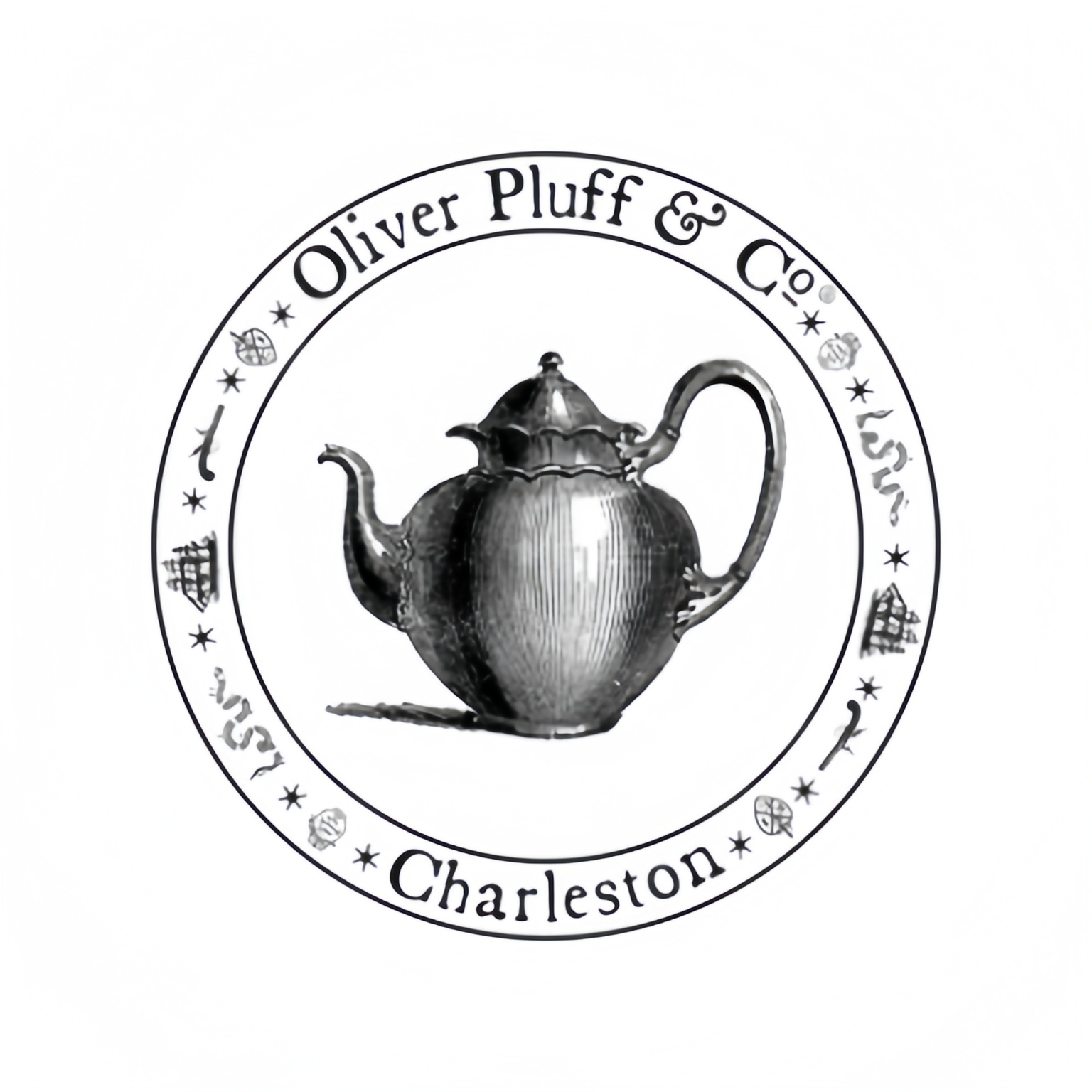Chinese Yixing Zisha Teapot for Exclusive Collections
Welcome to the finest representation of the Tea Ceremony, the “Chinese Yixing Zisha Teapot for Exclusive Collections”. The teapot not only for brewing, but also a piece of history, an artwork, an epitomization of culture, and, optionally, a wonderful collections of China.
Zisha (literally “purple sand”) teapots originated in the Yixing region of the Jiangsu province, China. While Zisha teapots are commonly used for everyday brewing of Chinese tea in China, they are very popular amongst tea enthusiasts in Japan, Taiwan, and Southeast Asia. In recent years, they have gradually become sought-after collector’s items.
Made of material called Zisha – a type of clay only found in Yixing – the pot is porous enough to “breath”. The more you brew tea in the pot, the more seasoned it will become. Consequently, any tea brewed thereafter will develop more flavor, tasting better than expected. This process of “seasoning” the Yixing teapot is unique to the ownership of the pot, thereby connecting the user to the pot in a way.
Owing to the characteristically high iron content of Yixing clay, and the particular mixture of minerals in each batch of clay, Yixing teaware can be found in an array of deep, rich natural colors – purple, red, brown and yellow, all unspectacularly named but entirely natural and stunningly beautiful. There are, and has historically been, absolutely no glazes used.
The balance between the teapot’s form and the function is thoroughly considered. The design may be inspired by Nature, History or simply contain classical forms; it is beautifully made to serve a purpose – brewing a select type of tea (mainly Pu-erh, Oolong and black). The lid is tight, the spout is shaped for easy pouring and the handle is carefully formed and balanced for comfort. Everything reflects the mastery and devotion of the craftsperson who made it. Having a yixing teapot for exclusive collection is to indulge in cultural and artistic enjoyment and to explore the long-standing theme of Chinese tea.
Expand the application scenario
Yixing Zisha teapot, especially those privately collected exclusive Zisha teapots, thanks to their unique features and the cultural meaning, have a variety of functions beyond tea-making. Here are the occasions they are applied.
High-End Retail and Luxury Goods: Yixing teapots are luxury products that could be sold in luxury retail outlets, such as specialty tea shops, art galleries, antique stores, high-end home goods stores; Their potential as collector’s items or functional art pieces can attract customers in these contexts.
Hospitality (Luxury Hotels and Tea Houses): High-end hotels and tea houses can offer customers original Yixing teapots, providing an exquisite and authentic tea experience for their clientele. Consequently, such services will augment the perception of value and cultural richness of their offerings.
Cultural and Educational Organizations: Several museums, art institutions, cultural centers, galleries, and educational programs that are associated with Asian, tea, tea culture, and related aspects have Yixing teapots purchased for their collections, exhibitions, demonstrations, workshops, and related cultural education programs to their various audiences and clients respectively.
Corporate gifting and executive suites: Good quality Yixing teapots are an ideal corporate gift. They convey a sense of respect, tradition and good taste. Yixing teapots may also be used in executive suites or meeting rooms to promote a stimulating yet relaxing atmosphere.
Interior Design and Home Decor: As beautiful objects, Yixing teapots are sought after by interior designers and homeowners looking to add elements of traditional art, craftsmanship, and cultural depth to living spaces.

What common problems can be solved?
Enhanced Flavor of Steeped Tea — The porous composition of Yixing clay will absorb small amounts of tea oils and aroma over time, resulting in an enhanced flavor of the steeped tea, compared with tea brewed in a porcelain or glass teapot. A well-used teapot will eventually develop an aroma of its own due to repeated absorption and will in turn enhance the flavor of the tea brewed thereafter.
Thermal Insulation: Yixing clay retains heat very well, and is suited for teas that need high brewing temperatures such as Pu-erh and black oolongs. This enables the pot to maintain a constant temperature for long periods of time even over several infusions.
Completing the Full Tea Ceremony Experience: A Yixing teapot is a must-have for any drinker who is already practicing the traditional Chinese Gongfu tea ceremony. It provides the proper tool needed for the ritual, allowing them to feel closer to the cultural roots as well as the meditative nature of the ceremony.
Collection as asset: For the collector of Yixing teapots, acquiring genuine, well-made teapots allows the collector to build a collection that increases in value over time. Rarity of clay, mastery of the craftsmanship, and historical value contribute to the value of Yixing teapots as an investment.
Fostering mindfulness and relaxation: Using and maintaining a Yixing teapot can promote patience and mindfulness. The discipline involved in the tea ceremony can be a calming ritual that reduces stress and encourages relaxation.
Sustainable & durable teaware: Compared to glazed ceramics that can chip or crack rather easily, Yixing teapots are extremely durable if properly cared for. a well maintained piece can last many generations to then be passed on as a heirloom, a good slice of Chinese teapots on the market are antique Yixing teapots for sale , unobtainable with modern materials, only improving with age.

FAQ
Here are some frequently asked questions related to Yixing Zisha teapots for exclusive collections:
The Yixing Zisha clay is mined exclusively from the Yixing region of China. The distinctive nature of Yixing Zisha clay varies from other clays because of its unique composition of minerals, high content of iron, and porous structure. Zisha clay differs from other clays in that it contains hydrated mica, kaolin, and quartz. These elements give the clay plasticity for ease of shaping while still allowing it to be fired to a hard, stable product that still retains a minute degree of porosity without glazing. After it is made into a teapot and fully fired in an oven, the clay looks rough, and has a sandy texture, containing a minute degree of porosity that allows it to retain heat and at the same time “breathe”. It is this “breathing” property that allows the teapot, over time, to absorb the smell and taste of the teas brewed in it.
To season a new yixing teapot for the first time of use, the most common method is as follows: rinse the pot with warm water inside and outside to gently remove any dust and residue. Immerse the pot into a pot of water and tea leaves (same as the type of tea you intent to brew with in the pot) and simmer gently for 30–60 minutes. Allow teapot to cool in water. After teapot has been removed, gently scrub surface with a soft brush or cloth to remove any surface clay. Repeat process a couple of times. Brew several pots of tea in teapot and discard tea liquor. Repeat several times. This process is used to start the opening up of the clay’s pores and begin the tea oil absorption process while removing any clay residue taste so as to prepare the pot to brew tea optimally.
It is recommended that each Yixing teapot be dedicated to one specific type or category of tea (for example, one pot exclusively for raw Pu-erh, one for roasted Oolong, one for black tea). Because the clay absorbs the characteristics of the tea over time, brewing different types of tea in the same pot will eventually mix the flavors that are absorbed in the clay, creating a muddled flavor profile and preventing the development of a well-seasoned pot dedicated to any single type of tea. This dedication allows the teapot to enhance the specific characteristics of one tea type over time.
Cleaning up a Yixing teapot is a simple process, requiring very little work. After each use, both the inside and outside of the teapot should be rinsed clean with hot water. Cleansers (such as soap or detergents) should not be used: the clay will absorb these chemicals, which will destroy the teapot’s seasoning as well as the flavors of teas brewed in it. The outside of the teapot should be wiped dry with a soft cloth; the inside should be allowed to air dry before the teapot is stored. The teapot should be stored in a well-ventilated area, away from odours.
Identifying a genuine Yixing teapot can be challenging, as there are many fakes on the market. However, experienced masters note that authentic pieces have distinctive characteristics that fakes typically lack due to insufficient understanding of authentic raw clay and kiln experience. Key identifying characteristics include: 1) The triangulation of feel, texture and sound – authentic pieces have the feeling and characteristic of natural stone. 2) The characteristic of ZiSha clay with truly unglazed surface that gives overall completion and natural texture reflection. 3) Overall weight and balance – authentic teapots have consistent weight distribution, while uneven firing and raw clay mixture in fakes result in inconsistent weight distribution.
This is essentially the artist’s signature on a yixing teapot, analogous to the purpose of a signature on a painting. It reveals the artist responsible for making given pot and marks its authenticity and quality as a legitimate piece of art. Master potters acquire a vetted reputation for their seals, and therefore the presence of a famous artist’s seal will often make the teapot inevitably more valuable and collectible. The seals can be impressed, carved in, or stamped, and usually contain the name of the artist, studio, or an important date.
There are different types of Zisha clay, such as Zini (purple clay), Hongni (red clay), Duanni (mixed clay) and many more. They differ in mineral composition, firing temperature, colour and texture. This changes the porosity, heat retention, and behaviour with different teas. For example, Zini is preferred with Pu-erh and Oolong, while Hongni is sometimes used with black and red tea. Different types of clay are extremely important to collectors and change the brewing performance and appearance of the teapot.
Fine Yixing teapots from highly regarded and practiced artists, especially from rare clays of exceptional character, can represent great investments. In general, the value of fine Yixing teapots has appreciated handsomely over time. High quality clays are becoming scarce. Master teapot makers have been passing away. Demand for fine Yixing teapots is on the increase. Still, like any art investment, true worth is in the eye of the beholder, and it is wise if buying Yixing teapots as an investment to buy from highly reputable sources, always being careful about authenticity, artist reputation, quality of clay, craftsmanship, condition, and changing fashion.
Selection/Comparison Suggestions
There are many aspects in selecting a Yixing teapot for your collection or everyday use and comparing multiple options before making decision is often very rational strategy. Here are some things you should consider when choosing or comparing yixing teapots:
| Feature |
Teapot A (Example: Zini, Artist X) |
Teapot B (Example: Hongni, Artist Y) |
| Clay Type |
Zini (Purple Clay) |
Hongni (Red Clay) |
| Artist |
Artist X (Known for traditional forms) |
Artist Y (Known for innovative designs) |
| Shape |
Shi Piao (Stone Ladle) |
Xi Shi (Beauty’s Breast) |
| Capacity |
150 ml |
120 ml |
| Recommended Tea |
Pu-erh, Dark Oolong |
Black Tea, Red Tea |
| Craftsmanship |
Excellent lid fit, smooth pour |
Very fine details, balanced handle |
| Aesthetic |
Classic, sturdy |
Elegant, refined |
| Age |
New (Contemporary Artist) |
Vintage (e.g., 1980s) |
| Price Range |
$$$ |
$$$$ |
| Notes |
Develops patina quickly |
Vibrant color, good for aroma |
Clay Type: As mentioned in the FAQ, there is not just only one type of clay for Yixing teapots, but a variety of them (Zini, Hongni, Duanni…). Each type of clay has unique properties, with some being better suited for certain types of tea. Take into account which type of tea you mainly intend to brew the teapot with. Compare the texture, color, and known characteristics of teapots made of different types of clays.
Artist Skill and Reputation: The skill level of the artist determines the quality, the shape and value of the teapot. Try to learn who the artist of the teapot is, how famous or popular is he/her, how long has he/her been making teapots, what his/her style is, and examine the quality of the craftsmanship — is the lid well echoed and/or fit the teapot perfectly, does the spot when pouring water forms a smooth pillar and the water is cleanly cut off when the teapot is turned back to upright sanitarily, Is the handle designed so that when the teapot is lifted it is well balanced?.
Form and Aesthetics: Yixing teapots come in a myriad of forms, each with its own historical and aesthetic significance. Some forms are classical (e.g., Shi Piao, Xi Shi, Fang Gu), while others are more modern or abstract. Evaluate the form for visual appeal and also consider functional aspects such as ease of handling and pouring.
Size and Capacity: Teapots come in a wide range of sizes from small single-serving teapots (less than 100ml) to larger teapots (over 300ml). Consider what size will suit your needs, given how much you typically brew per session. Do you usually brew tea only for yourself, or do you brew for multiple people? Consider the capacity of the pot relative to the overal size of the teapot.
Age and Provenance: Older teapots in general, teapots made by historical masters with clear provenance in particular, are most sought after by collectors. In terms of tea brewing, a new but well made pot works fine, but an antique one also bears historical values. Compare the condition and documented history of older pots.
Budget: Determine your budget and shop accordingly, but also compare or analyze differently priced teapots if possible. Ask yourself if the quality and potential value of the teapot measure up to its price. While a detailed comparison table requires specific product models, here’s a template of how you might compare two different Yixing teapots.

Cases/Examples from Real Customers
I am limited in what customer data I am able to share, but here are some hypothetical cases that might illustrate the ways collectors and tea lovers might feel the value and benefits of having a good quality Yixing Zisha teapot.
Case 1: The Pu-erh Lover
Mr. Li is a long term collector of aged Pu-erh tea. He purchased a vintage Zini Yixing teapot made by a well known (but not especially famous) artist from the 1990s. He used the pot exclusively for his aged raw Pu-erh. After 2 years of daily use, the pot had developed a deep, lustrous sheen on the outside of the pot. More than this though, Mr. Li began to notice that the taste began to improve as well. The harsh, sharp edges that were persistent in the flavor of young aged Pu-erh smoothed out. The complex earthy and woody fragrances became more vivid and harmonious. He found that somehow, certain hard to define characteristics that were present in the tea when brewed in a gaiwan, but difficult to grasp were ’rounded out’ by the teapot. Mr. Li now found that this teapot is indispensable in bringing out the most value from his prized collection of Pu-erh, finding that the seasoned pot was able to guide him to a more touching and profound appreciation of subtle changes in the tea that he could never have arrived at with any of his other teaware.
Case 2: The Art Collector
Recently Ms. Chen, an art collector, who had only just begun delving into the beverages side of Chinese Tea Culture, purchased a contemporary Yixing teapot made by a young, up-and-coming award winning Yixing artist, known for her bold and creative designs. Her interest was piqued viewing the teapot on display. The unusual sculptural form and story of the author intrigued her. Using the teapot for brewing her daily Oolong tea, she found that the tactile functional beauty
Recently Ms. Chen, an art collector, who had only just begun delving into the beverages side of Chinese Tea Culture, purchased a contemporary Yixing teapot made by a young, up-and-coming award winning Yixing artist, known for her bold and creative designs. Her interest was piqued viewing the teapot on display. The unusual sculptural form and story of the author intrigued her. Using the teapot for brewing her daily Oolong tea, she found that the tactile functional beauty of the piece held her attention. The way the lid set into the pot precisely, the way it settled in comfortably in her hand, and poured crisply and cleanly, without a dripping awoke an additional tactile enjoyment to her tea ritual. She also appreciated the subtle change in the color of the teapot over the months of using it. For Ms. Chen the teapot was not merely something functional — it was a piece of portable art that enriched her living space with interest and color, and intensified the cultural connection in her tea drinking. Ms. Chen hopes to collect other pieces by contemporary Yixing artists.
Case 3: The Tea House Owner
Mr. Wang is a proprietor of a traditional Chinese style tea house. He invested in a series of high quality Yixing teapots for his tea house’s premium tea service. He chose several different pots made of different types of clay and assigned a pot to each category of tea on his menu. The customers who experienced ordering his finest quality teas, brewed with these seasoned Yixing pots often commented about the unbelievable depth and purity of the flavor. This most authentic Yixing teapot experience became a defining selling point to his tea house — attracting connoisseurs to visit and providing a truly authentic cultural exchange from the heart of Chinese tea culture. This distinguished him from the many other tea houses providing the use of ordinary teaware for brewing tea. The teapots themselves, being displayed in his tea service area also added greatly to the ambiance and aesthetic appeal of the tea house.






















Kai Johnson –
High quality product and cute design. Its worth it.
Adam Mohammed –
Absolutely stunning. A must have for the collectors. I will buy again.
Samira Hussein –
A true treasure. Will pass this down in my family someday.